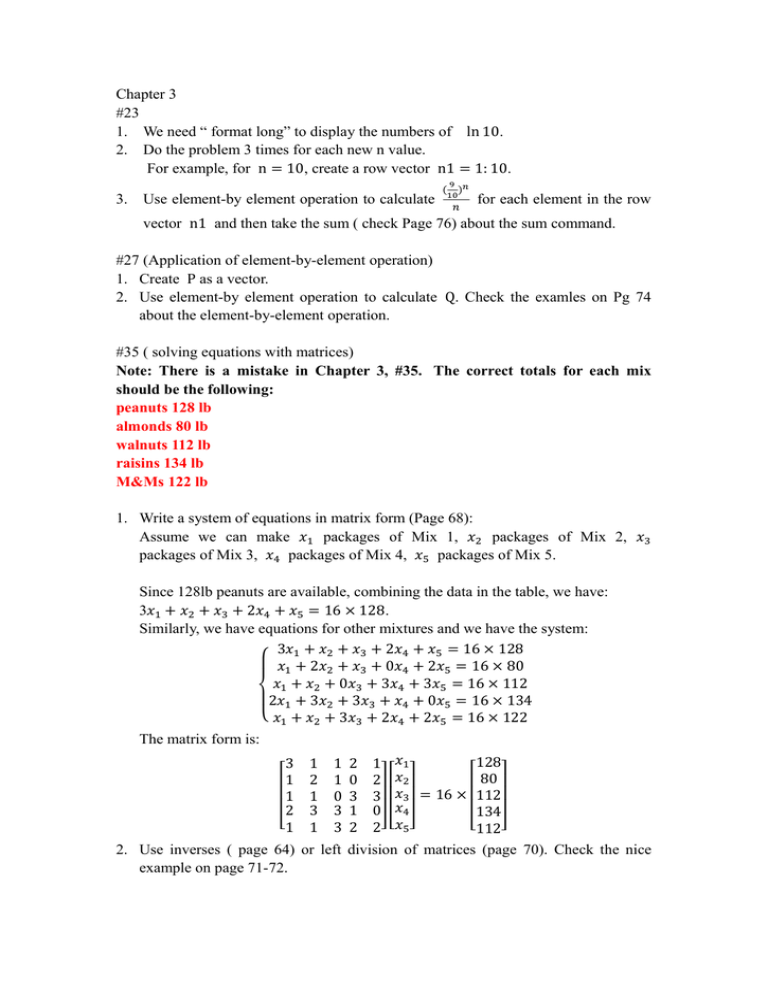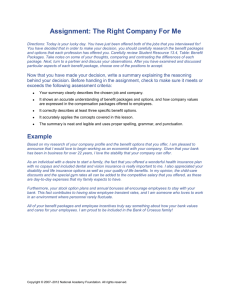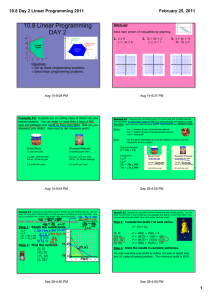Chapter 3 #23 ln 10.
advertisement

Chapter 3
#23
1. We need “ format long” to display the numbers of ln 10.
2. Do the problem 3 times for each new n value.
For example, for n = 10, create a row vector n1 = 1: 10.
3. Use element-by element operation to calculate
9
10
( )𝑛
𝑛
for each element in the row
vector n1 and then take the sum ( check Page 76) about the sum command.
#27 (Application of element-by-element operation)
1. Create P as a vector.
2. Use element-by element operation to calculate Q. Check the examles on Pg 74
about the element-by-element operation.
#35 ( solving equations with matrices)
Note: There is a mistake in Chapter 3, #35. The correct totals for each mix
should be the following:
peanuts 128 lb
almonds 80 lb
walnuts 112 lb
raisins 134 lb
M&Ms 122 lb
1. Write a system of equations in matrix form (Page 68):
Assume we can make 𝑥1 packages of Mix 1, 𝑥2 packages of Mix 2, 𝑥3
packages of Mix 3, 𝑥4 packages of Mix 4, 𝑥5 packages of Mix 5.
Since 128lb peanuts are available, combining the data in the table, we have:
3𝑥1 + 𝑥2 + 𝑥3 + 2𝑥4 + 𝑥5 = 16 × 128.
Similarly, we have equations for other mixtures and we have the system:
3𝑥1 + 𝑥2 + 𝑥3 + 2𝑥4 + 𝑥5 = 16 × 128
𝑥1 + 2𝑥2 + 𝑥3 + 0𝑥4 + 2𝑥5 = 16 × 80
𝑥1 + 𝑥2 + 0𝑥3 + 3𝑥4 + 3𝑥5 = 16 × 112
2𝑥1 + 3𝑥2 + 3𝑥3 + 𝑥4 + 0𝑥5 = 16 × 134
{ 𝑥1 + 𝑥2 + 3𝑥3 + 2𝑥4 + 2𝑥5 = 16 × 122
The matrix form is:
3
1
1
2
[1
1
2
1
3
1
1
1
0
3
3
2
0
3
1
2
128
1 𝑥1
𝑥
80
2 2
3 𝑥3 = 16 × 112
0 𝑥4
134
]
𝑥
[
]
[
2 5
112]
2. Use inverses ( page 64) or left division of matrices (page 70). Check the nice
example on page 71-72.




